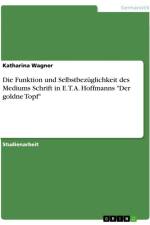von Katharina Wagner
15,95 €
Seminar paper from the year 2015 in the subject English Language and Literature Studies - Literature, grade: 2,0, University of Cologne (Englisches Seminar I), course: American Postmodern Literature, language: English, abstract: With his debut novel Less Than Zero, Bret Easton Ellis set a milestone for a generation, who needed a voice. First published in 1985 when he was 21 and still at Bennington College, Ellis is now considered as the 'celebrity author' of the postmodern era, using the minimalist style for which the novel became famous. Writers of postmodern fiction, also called 'Blank Fiction', elegantly use a minimalist plot with flat characters in a simple style and as validated member of the 'Brat Pack', Ellis combines urban life, violence, drugs and consumerism. In the novel we follow Clay, the 18-year-old protagonist and student at Camden College in New Hampshire, coming back to Los Angeles for Christmas break. Experiencing several parties, concerts, affairs and drugs with his old friends, Clay exploresthe apathy, boredom and alienation from his old life. Although criticized for Ellis's straight nihilism, integrating his own celebrity persona into his art and creating a universe of immature characters who seem to grow older but without any growing effect, it is questionable, if Less Than Zero is only just that ¿ a world inhabited by rich and shallow characters without any purpose. With the help of Jean Baudrillard's simulation theory and Sartre's theory of Being and Nothingness, which will be introduced before analyzing the novel, this paper will address Clays world of simulacra and Nothingness and argue for this being the purpose of the novel; creating a meaningless world. Through conversations and media, a Clay becomes visible, who seeks for more beyond the surface and shallowness and although the novel does not seem to follow a red thread, it suggests that Ellis as an author of 'blank fiction' is well aware of what he is doing with Less Than Zero. How can a novel be a how-to-torture, but also a book of serious ambition? (Baelo-Allué 2011)This paper will show that an 'in-between' is possible; an 'in-between' between ¿pornographic gore¿ and ¿serious postmodern literature¿ - and maybe the two phrases do not contradict each other so much as assumed.









